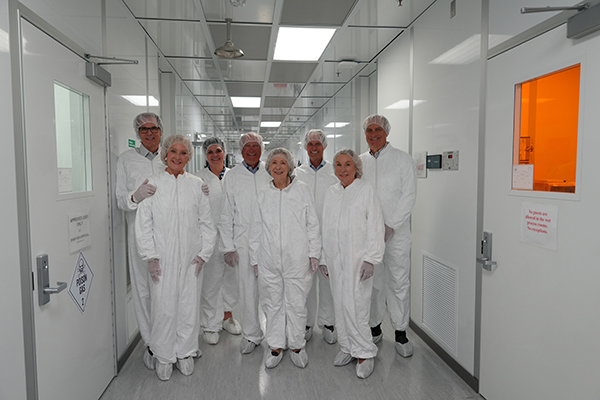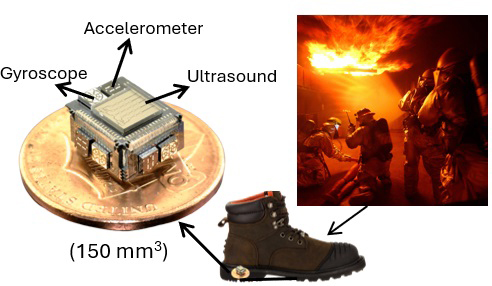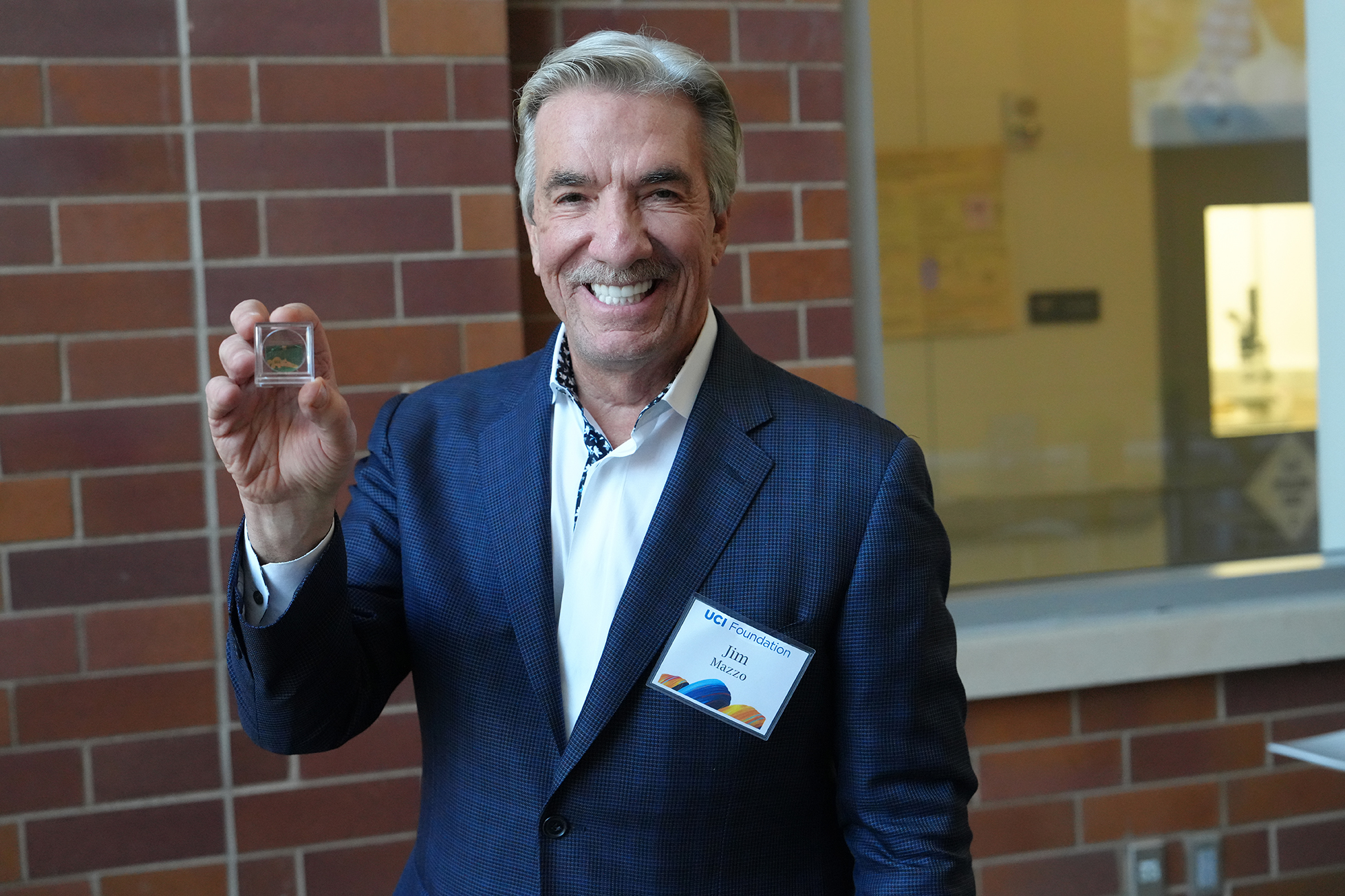UCI Foundation Members Tour Clean Rooms

May 13, 2024 - A group of curious UCI Foundation members went on a clean room expedition last month to see where UCI researchers, students and local industry members create micro- and nano-fabricated semiconductors, sensors and devices. They visited the Integrated Nanosystem Research Facility (INRF) at Engineering Gateway and Bio-Organic Nanofabrication (BiON) at CALIT2.
Jim Mazzo, Foundation trustee and co-chair of engagement and stewardship, welcomed the crowd and introduced Hung Cao, associate professor of electrical engineering and computer science, who often uses the two clean rooms.
Cao said the work happening in the two facilities involves many of today’s most important technologies being applied in artificial intelligence, renewable energy, quantum materials, Internet of Things and biotechnology. With 15,000 square feet of almost-dustless space, the two facilities maintain advanced equipment for processing semiconductors, thin films and biomaterials. “Well-trained staff are training our students and we have a lot of ambitious projects and cutting-edge research going on here,” said Cao.
One such user, mechanical and aerospace engineering graduate student Austin Parrish, gave a short presentation on an alternative system to GPS for navigation. “We focus on inertial navigation, which is

built for environments in the worse-case scenario,” said Parrish, who works with Professor Andrei Shkel. “This means there are no external signals getting in. So, for example, with first responders who enter a building in an emergency, and there are no radio frequency signals, you need a self-contained solution that will always work. We build gyroscopes and accelerometers - both are needed to do navigation.”
Parrish passed around samples of the gyroscopes, parts of which were fabricated in the clean rooms.
CALIT2 Director G.P. Li explained the history of the clean rooms, which were funded in 1998 by the former engineering dean Nicolaos Alexopoulos. “When we started, we thought, ‘What is needed in Orange County to empower innovators to start a company.’ Our business model is to share these resources with the community to be an incubator for innovation,” said Li.
“The future is empowered by semiconductors,” he continued. “What we are doing here is system engineering in semiconductors, and under the new Chips and Science Act, we are at the forefront of this effort.”
After the presentations, the group suited up for the tour. The highly controlled facilities strictly limit contaminants, requiring filtered and recirculated air to preserve the integrity of the micro- and nanofabrication processes that occur within.

Visitors must wear head to toe coverings to protect the clean environment from outside pollutants.
Mo Kebaili, senior process development engineer, took the group through the rooms and explained the functions of the high-tech equipment and the research.
Gary Singer, Foundation chair, was impressed. “It was well done,” he said. “Mo gave us a pretty in-depth explanation of the capabilities and the research that happens.”
Foundation members Dick and Linda Ackerman agreed. “It was technical, but I could follow it,” said Linda. “It was really interesting.”
This is not the first visit from the UCI Foundation members to the clean rooms. In early 2009, the trustees, including then UCI Chancellor Michael Drake, put on the same head-to-toe suits and toured the INRF.
– Lori Brandt
